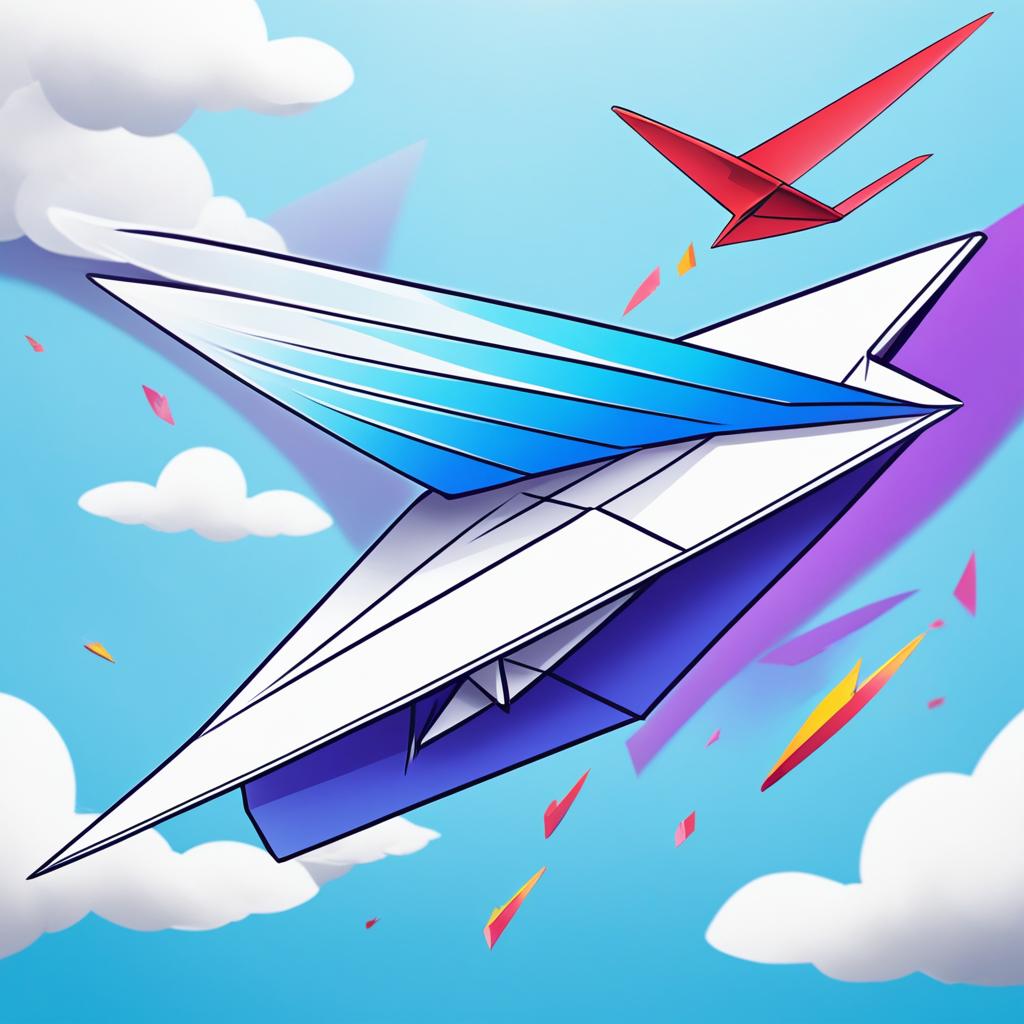Have you ever wondered why a paper airplane is able to gracefully soar through the air, defying gravity? It’s not magic or pure luck – there are scientific forces at play that keep it airborne. Understanding these forces is key to designing a paper airplane that can fly longer and farther.
In this article, we will explore the main forces that act on a paper airplane: lift, drag, thrust, and gravity. By understanding how these forces interact, you’ll gain insights into the principles of flight and how to optimize your paper airplane designs for maximum performance.
So, let’s dive in and uncover the secrets behind the mesmerizing flight of a paper airplane.
Thrust

In the world of paper airplanes, thrust is the driving force that propels the aircraft forward. Unlike airplanes with engines, paper airplanes rely on manual propulsion, typically achieved through a throw. When you throw a paper airplane, the initial force from your hand imparts a forward motion to the aircraft, setting it in flight.
The thrust generated by the throw is what allows the paper airplane to overcome drag and maintain its forward momentum through the air. The total mass of the paper airplane plays a crucial role in accelerating it after the throw. The greater the mass, the more thrust is required to propel the aircraft and counteract the opposing forces.
The aerodynamic design of the paper airplane also contributes to its thrust. By incorporating principles of aerodynamics into the design, such as wing shape and airfoil profiles, the aircraft can achieve better lift and minimize drag. The streamlined shape and efficient aerodynamic features enable the paper airplane to travel farther and faster through the air.
When considering the thrust of a paper airplane, it’s essential to understand that the aircraft relies solely on the kinetic energy from the throw or propulsion by hand. Without any additional engines or propulsion systems, the initial throw becomes the primary source of thrust, making it crucial to impart the right amount of force and angle for optimal flight performance.
By mastering the art of throwing and considering the aerodynamic design of your paper airplane, you can achieve impressive distances and enjoy the thrill of seeing your creation soar through the air.
Lift

Lift is the primary force that keeps the paper airplane flying. It is generated by the shape of the paper airplane’s wings, also known as the aerofoil. When the paper airplane moves through the air, the airflow over the wings creates different pressure distributions.
The pressure on the top of the wings is lower, while the pressure on the bottom is higher. This pressure difference results in the generation of lift, which allows the paper airplane to stay airborne.
The aerofoil shape of the wings plays a crucial role in creating lift. The curved shape on the top of the wings directs the airflow faster, creating a negative pressure or lower pressure, while the flatter bottom creates positive pressure or higher pressure. This difference in pressure creates an upward force, counteracting the force of gravity and keeping the paper airplane afloat.
To visualize this process, imagine holding your hand out of a moving car window. When you tilt your hand, the air flows faster over the top of your hand, creating lift and causing your hand to rise. This same principle applies to the wings of a paper airplane.
By deliberately designing the shape and contour of the wings, you can optimize lift generation for a specific paper airplane design. Experimenting with different wing shapes and angles of attack can help you achieve maximum lift and improve the flight performance of your paper airplane.
Take a look at the image below to understand how the airflow over the wings creates lift:
Now that you understand how lift is generated, let’s move on to the next section to explore the concept of drag and its impact on the flight of a paper airplane.
Drag
Drag is an important factor to consider in the aerodynamic design of a paper airplane. It is the force that opposes the motion of the airplane through the air, acting in the opposite direction to the flight path. The amount of drag experienced by a paper airplane is influenced by several factors, including its body design and the surface area it exposes to the air.
The body design of a paper airplane plays a key role in determining the amount of drag it encounters. A sleek and streamlined design helps reduce drag by allowing the air to flow smoothly around the airplane. Sharp edges or protrusions, on the other hand, can create turbulence and increase drag. By optimizing the shape of the body, engineers can minimize drag and improve the overall aerodynamic performance of the paper airplane.
Another important factor related to drag is the surface area of the paper airplane. Generally, a smaller surface area exposed to the air results in lower drag. Aircraft engineers often design paper airplanes with minimal wing surface area, as it helps reduce the resistance to motion. By reducing drag, the paper airplane can achieve greater distances and maintain stable flight.
Optimizing drag is crucial for maximizing the efficiency and performance of a paper airplane. By incorporating streamlined body designs and minimizing surface area, engineers can create paper airplanes that glide smoothly through the air, minimizing the impact of drag and allowing for longer, more controlled flights.
To better understand the relationship between drag and aerodynamic design, refer to the table below, which highlights the drag characteristics of different paper airplane designs:
| Paper Airplane Design | Body Shape | Surface Area | Drag |
|---|---|---|---|
| Design 1 | Sleek and streamlined | Minimal | Low |
| Design 2 | Sharp edges and protrusions | Large | High |
| Design 3 | Straight and simple | Moderate | Medium |
Different paper airplane designs exhibit varying levels of drag based on their body shape and surface area. By analyzing the data presented in the table and considering the visual representation of drag in the image above, engineers and enthusiasts can gain valuable insights into the effects of aerodynamic design on drag for paper airplanes.
Gravity (Weight)
Gravity is the fundamental force that plays a crucial role in the flight of a paper airplane. As it glides through the air, gravity exerts a downward force, constantly pulling the airplane towards the ground. To counteract this force, the airplane must generate enough lift and thrust to overcome gravity’s influence and maintain a stable altitude.
The weight of the paper airplane is directly influenced by gravity. The greater the mass of the airplane, the more it weighs, requiring a higher magnitude of lift to keep it in the air. Achieving the right balance between lift and gravity is essential to ensure the paper airplane’s stability and successful flight.
Altitude, or the height at which the paper airplane flies, is also affected by gravity. The airplane needs to generate enough lift to counteract the downward pull of gravity and maintain a consistent altitude. Insufficient lift will cause the airplane to descend, while excessive lift can result in the airplane climbing too high. Finding the optimal equilibrium between lift and gravity is crucial for achieving the desired altitude and a smooth flight.


